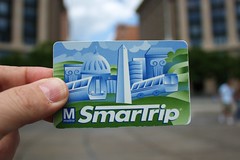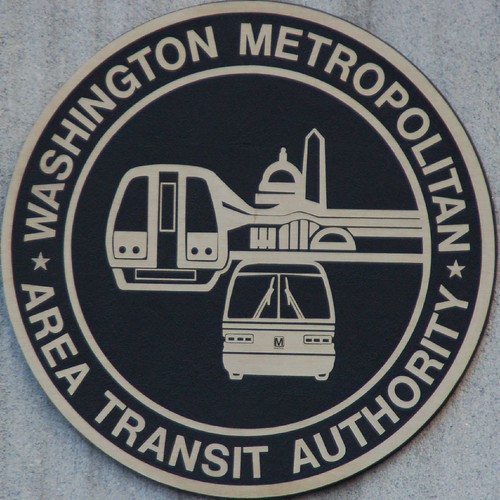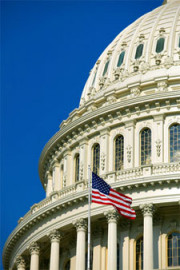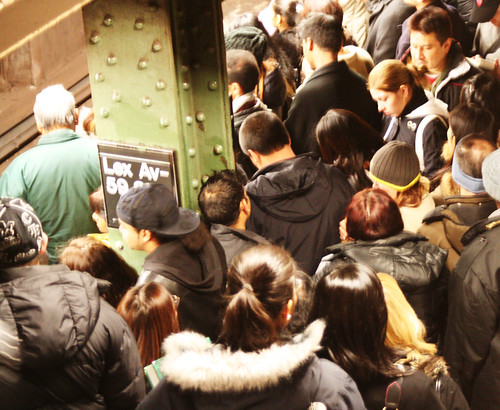Monday, March 9, 2009 — ISSN 1529-1057
AVIATION
1) National Space Biomedical Research Institute, Alion Aim for Software to Help Keep Pilots Oriented
Link to story in Government Computer News:
http://gcn.com/articles/2009/03/09/update2-spatial-disorientation.aspx
CAMERAS
2) Video Surveillance Turns the Corner
Better cameras, smarter software and faster networks enhance systems.
Link to story in Government Computer News:
http://gcn.com/articles/2009/03/09/video-surveillance-technology.aspx
RAILROADS
3) Violations Before Los Angeles Crash Stir Rail Safety Debate
Link to AP story:
http://www.google.com/hostednews/ap/article/ALeqM5g2lXQ1QkZ2c6oj4FJtK3kYMb_S4gD96QCP7O0
ROADWAYS
4) Road Lines Yielding to Wintry Barrage
Markings fade but technology may help drivers stay in their lane.
Link to story in The Boston Globe:
http://www.boston.com/news/local/massachusetts/articles/2009/03/09/road_lines_yielding_to_wintry_barrage/
5) Massachusetts Governor Details Flagger Success
Says $12,500 has been saved by taking police off detail.
Link to story in the Boston Herald:
http://www.bostonherald.com/news/politics/view/2009_03_07_Gov__Deval_Patrick_details_flagger_success:_Saves__12G_taking_cops_off_jobs/
6) Federal Efforts to Strengthen Security Should Be Better Coordinated and Targeted on the Nation’s Most Critical Highway Infrastructure
Link go report from the US Government Accountability Office:
http://www.gao.gov/cgi-bin/getrpt?GAO-09-57
7) Highway Trust Fund: Improved Solvency Mechanisms and Communication Needed to Help Avoid Shortfalls in the Highway Account
Link go report from the US Government Accountability Office:
http://www.gao.gov/cgi-bin/getrpt?GAO-09-316
SAFETY / SECURITY
8) Emergency Responders Need Equipment Compatibility, US Department of Homeland Security Official Says
Link to story in Government Technology:
http://www.govtech.com/gt/articles/625804
SPACE
9) NASA Plans Improved ‘Internet in Space’
Link to story in Government Computer News:
http://gcn.com/articles/2009/03/09/nasa-software-radios.aspx
TRANSIT
10) Boeing Improves the Landing Technology of Its Planes
Link to story in Quân Ðội Nhân Dân:
http://army.qdnd.vn/vietnam.travel.tnews.23190.qdnd
11) A Bus-Rider’s View of the Pittsburgh-Area Bus System
A few simple things, such as improved information, might go a long way.
Link to story in the Pittsburgh Post-Gazette:
http://www.post-gazette.com/pg/09065/953550-294.stm
12) Cold, Silent Treatment for MARC Riders
Maryland rail agency could provide better information to customers.
Link to column in The Baltimore Sun:
http://www.baltimoresun.com/news/traffic/bal-md.dresser09mar09,0,1989231.column
13) Google Transit at TransITech: A Year Later and 500% Greener
Link to blog from Google:
http://google-latlong.blogspot.com/2009/03/google-transit-at-transitech-09-year.html
14) Houston Metro Should Stay on Track in Getting Public Input on Rail
Link to editorial in the Houston Chronicle:
http://www.chron.com/disp/story.mpl/editorial/6298263.html
News Releases
1) NOAA Report Uncovers Why Some People Don’t Heed Severe Weather Warnings
2) Hong Kong Coordination Center Ensures Smooth Traffic Flow
3) US Digital Signage Market to Grow by One Third in 2009
4) US Airways Launches Flight Trial of the Next Generation of In-Flight Entertainment Systems
5) New South Wales Trip Planner Widget Now Available for All Web Sites
6) BMW-led Research Validates Fast Delivery of Real-Time Traffic Information via HD Radio Technology
Job Posting
– Communication & Outreach Specialist – US DOT Intelligent Transportation Systems (ITS) Joint Program Office – Washington, DC
http://tinyurl.com/b95y7h
– Knowledge & Technology Transfer Program Manager – US DOT FHWA – Washington, DC
http://tinyurl.com/ch55pz
Upcoming Events
ACI-NA Customer Service & Aviation Education Conference – April 22-24 – Detroit
http://www.aci-na.org/conferences/detail?eventId=138
Today in Transportation History
1989 **20th anniversary** – Eastern Air Lines filed for bankruptcy protection.
http://testimony.ost.dot.gov/test/pasttest/89test/Murphy1.pdf
=============================================================================================
The Transportation Communications Newsletter is published electronically Monday through Friday.
To subscribe send an e-mail to: TCNL-subscribe@googlegroups.com
To unsubscribe send an e-mail to: TCNL-unsubscribe@googlegroups.com
TCN archives: http://groups.yahoo.com/group/transport-communications
Questions, comments about the TCN? Please write the editor, Bernie Wagenblast ati95berniew@aol.com.
© 2009 Bernie Wagenblast













